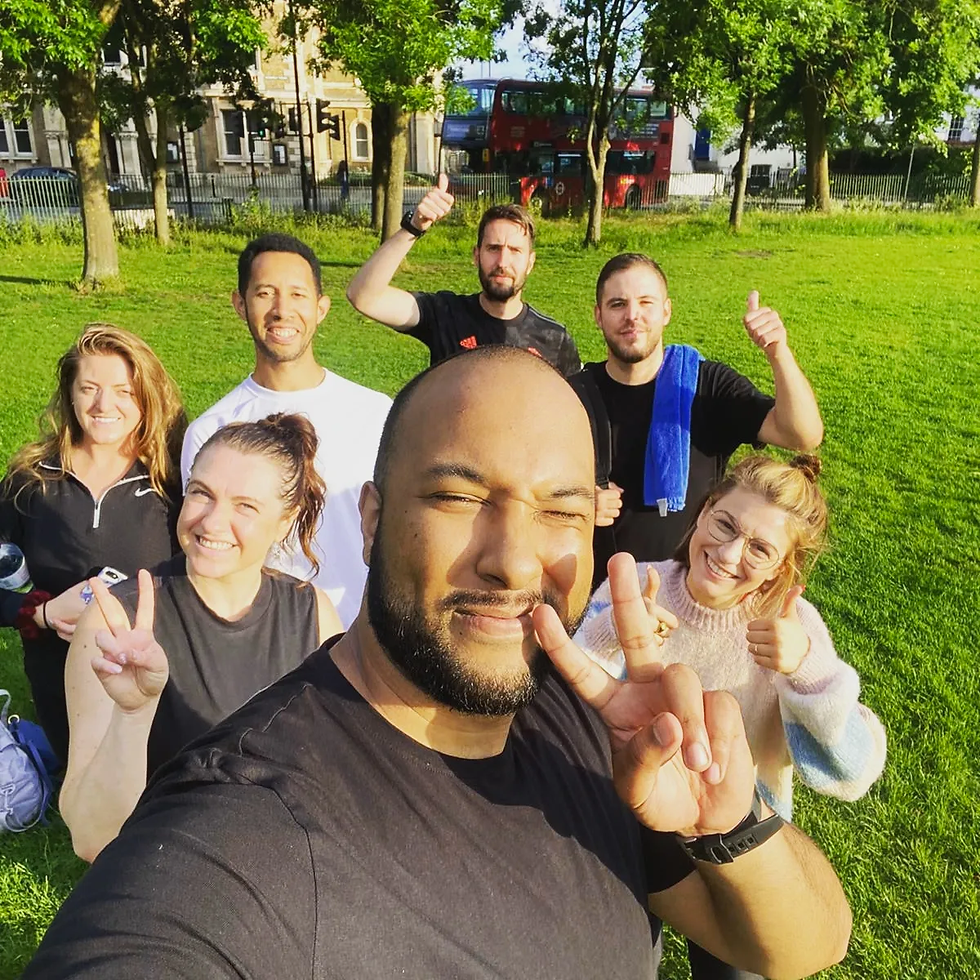The Art of Movement Newsletter - Week 23: Breathing
- Your Football Mentor
- Nov 23, 2022
- 4 min read
Welcome to ‘The Art of Movement’ - my weekly newsletter!
This newsletter is not just an opportunity for me to touch base with my dear patrons and show my gratitude for your monthly support, but also to offer you a 5 minute, easily-digestible read around the world of health, fitness and exercise. Here I will troubleshoot many common difficulties my clients experience, offer practical, actionable solutions for you to put to work in your life immediately, and of course provide my weekly motivation in the form of a favourite quote, and a takeaway lesson from it.
Please send me your feedback, questions and curiosity regarding the newsletter via the messaging tool on my Patreon page!
CHISWICK CIRCUITS
Are you local to West London? Circuits will be on again Tuesday 14th June at 6:30pm! We will be covering all aspects of strength and conditioning in a fun group environment (with music!).

Visit www.gabrieljonesperformance.com or contact gabrieljonesperformance@gmail.com for more information!
Week 23 - Breathing
In today’s modern health and fitness industry full of fancy looking ‘HIIT’ workouts, cult-creating training styles and fad diets, intentional and well-practised breathing is perhaps the single most underrated health hack (alongside getting 8 hours sleep). When you consider that we take roughly between 20,000-25,000 breaths EVERY DAY (my personal average is 13-14 breaths per minute, according to my Garmin watch) - that’s a lot of damn breaths. That’s a lot of scope for benefit when you’re getting it right, and recipe for disaster if you’re doing it wrong!
But what is meant by intentional breathing? What does it look like and how do we practice it?
Firstly, ‘good’ breathing practice will vary depending on who you ask or where you look. The way a yoga teacher may encourage you to breathe may come across profoundly different to that of a popular voice like Wim Hof, or different again to the advice of a neurobiologist.
Yoga/Meditation
Yoga practices encourage a few variations, focusing mostly on your ability to expand the lungs and lift the chest and diaphragm. Long breaths in through the nose are practised, followed by a hold of the breath, then breathing out also through the nose, keeping the mouth closed. Another technique used is alternate nostril breathing, where one nasal passage is blocked, allowing use of only the other one to inhale, then exhaling via the other nostril (blocking the passage of the one that drew air in).
Wim Hof Method
I have personally experimented with the Wim Hof app to practise some breathing techniques, and although I have found it difficult to do consistently, I have taken valuable lessons away from it (in particular deliberate cold exposure, which is a theme for another newsletter) and still occasionally apply the breathing practices without the app, as well as other techniques. The method encourages you to lay down and take 30-40 deep breaths, which, done properly, create a numbing, tingling sensation around the body (I guess it is basically a form of hyperventilation). This process is then ended with a big inhale and calm holding of the breath, for as long as is *sensibly* possible, before a recovery exhale. This 30-40 breath process is repeated a few times.
Nasal Breathing
There has been a recent surge in research into the benefits of nasal breathing - primarily as a tool for preventing snoring and sleep apnea. But also for other health benefits which as I understand it, stem from the fact we take in more air via each nasal breath, and this air (due to our nose hairs) is more filtered, preventing bacteria from easily entering our airways.

We obviously breathe more easily through the mouth during exercise, which means that it may not be possible or logical to breathe through the nose at all times of day. It is however easier to nasal breathe at rest, and therefore these are the moments we should be conscious of our breath, taking in air through the nose rather than the mouth.
The intercostal muscles (which sit between each rib, and move your ribs up and out when you breathe) need neural input/stimulation in order to activate, so a good way to consciously carry this out is actually by purposeful sighing.
Research has shown sighing as important! There have been interesting studies carried out on the effects of sighs on breathing function and quality. A Gov.uk blog even recommended research carried out by Dr. Andrew Huberman around purposeful sighing:
‘I am not a has-been. I am a will-be.’ - Lauren Bacall
Movement of the Week: Mindful Sigh
Yeah. That’s right. You heard me. I want you to have a go at this purposeful sigh, and then start using it from now on whenever you find an easy moment. Here’s more from the Huberman blog:
He describes the method as two inhales, a long exhale 1-3 times.
By mindfully sighing a few times, you can manually reduce two key symptoms of stress within a few seconds.
The best thing about this method is that it uses the body to control the mind, rather than trying to use the mind to control the mind.
That’s all for this week! Please spread the word about my Patreon channel so more people can enjoy the videos and newsletters!
Thank you,
Gabriel

Comments